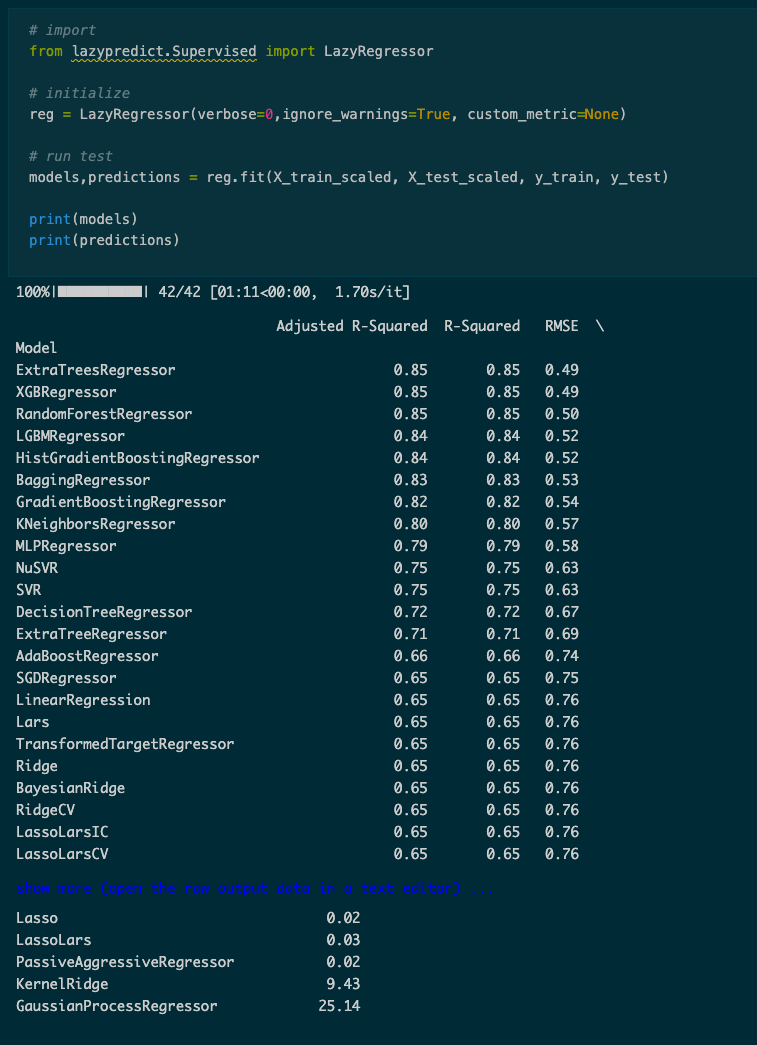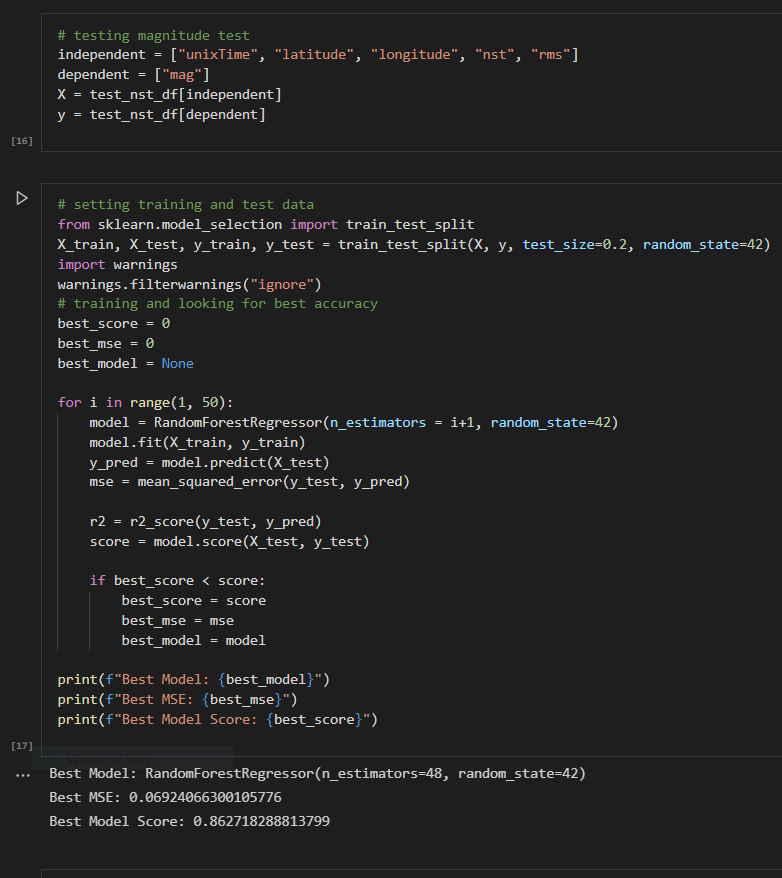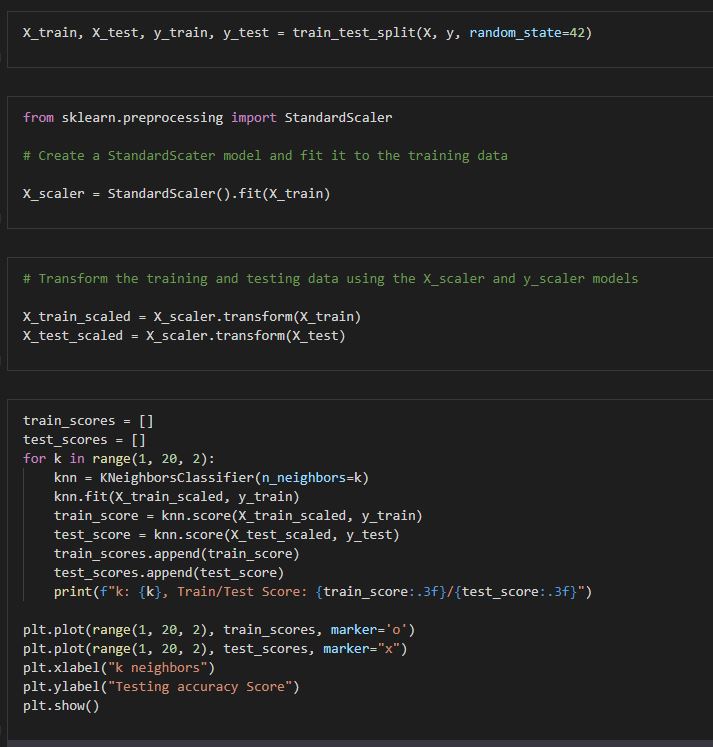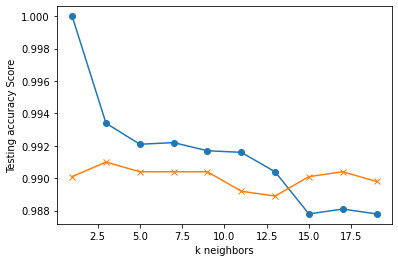Overview of Process
General workflow

Data Sources
| Data Source | Data Type | Period Coverage | Number of Data Rows |
|---|---|---|---|
| USGS Earthquake Hazards Programs - Spreadsheet Format | CSV | July 20, 2021 to August 19, 2021 | 13,323 |
| USGS Earthquake Hazards Programs - GeoJSON Summary Format | geoJSON | July 20, 2021 to August 19, 2021 | 13,323 |
Example of Model Selection
LazyPredict to Identify the Best Models

Data can be fed to Lazy Predict to identify if the data will be a good fit for the models chosen.
Models Used
Random Tree Forest Regressor
Code Model for Magnitude Prediction
Code used for Random Forest was based on the one found at https://www.kaggle.com/chenzecharya/earthquake-random-forest.

Small Tree Example with Earthquake Data Fed to Model for Magnitude Prediction

Actual model run had 42 estimators and resulted in model score of 0.867 and an MSE of 0.069
Code Model for Depth Prediction

Actual model run had 35 estimators and resulted in model score of 0.816 and an MSE of 18.80
KNN Classifier for Type of Seismic Movement (Earthquake or other type)
Code for KNN Model

Model used k = 13 and had an accuracy of 0.989
K neighbors vs Testing Accuracy Scores

Model used k = 13 and had an accuracy of 0.989